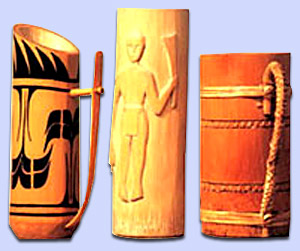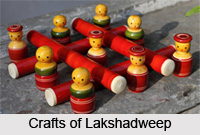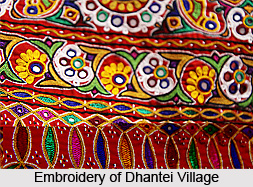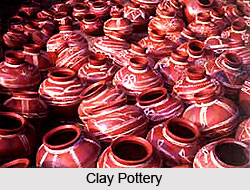 Clay craft centres of Himachal Pradesh are basically located in the areas like Kangra, Mandi, Kulu, Chamba, and Shimla where the communities of many migrated potters reside for decades. In Himachal Pradesh potters enjoy a relatively higher standard of living. This is because there is still a demand for earthenware vessels and there is a strong tradition of using clay figures and vessels for ritual occasions. The area of Himachal Pradesh is still rich in folklore and legends involving the potter, his wheel and his pots.
Clay craft centres of Himachal Pradesh are basically located in the areas like Kangra, Mandi, Kulu, Chamba, and Shimla where the communities of many migrated potters reside for decades. In Himachal Pradesh potters enjoy a relatively higher standard of living. This is because there is still a demand for earthenware vessels and there is a strong tradition of using clay figures and vessels for ritual occasions. The area of Himachal Pradesh is still rich in folklore and legends involving the potter, his wheel and his pots.
The potters, involved in the clay craft of Himachal Pradesh, are known as `kumhars` by the local people. The artisans are adept at creating clay items like pots, toys, money banks, pitchers, bowls, platters, cups, and lamps, flower vases of different shapes and sizes that are praised among the local people. These items are decorated with white patterns drawn with Golu clay. Apart from these, there are some items which are hugely used for storage purpose. The clay wares of Himachal Pradesh are found in its various forms like gidya, patri and narele etc. The figurines of Hindu gods and goddesses are made and painted in the most beautiful shades along with many accessories. These idols of various gods and goddesses are worshipped in various festivals of Himachal Pradesh.
The centre of clay craft of Himachal Pradesh is located in Kangra where the potters make clay items using black and dark red colours. The products made are mainly for domestic use and one of the famous items of this region is the container which is used for setting curds.
The beauty of mud architecture is visible everywhere in Himachal Pradesh, with vertical and horizontal planes merging together organically. Mud stairs and cupboards grow out of floors and walls inside, and outside continue to flow into courtyards. The clay crafts of the state reflect the contours and colours of the surrounding landscape and a result a complete visual harmony is achieved. Hand-cut grey slate tiles cover the roofs, also acting as drying surfaces for the buffalo dung cakes which can be seen in neat lines and rows everywhere, implanted with the finger marks of the woman who patted them into shape.
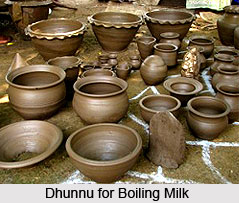
The domestic vessels of Himachal Pradesh are exquisitely decorated and are of the finest quality. The potters of the state are greatly talented but in the present age the new generation is moving away from pottery to a number of other lucrative occasions.
Work of pottery in Himachal Pradesh is seasonal and stops in the winter months of mid-November to January and during summer from mid-May to July. The clay that is used for pottery in Himachal Pradesh is both red as well as yellow clay. The clay is collected twice a year.
The various types of pots which are prepared in Himachal Pradesh are Gharra for containing water, Muggi for carrying water to the fields, Gharau for boiling milk - different sizes, Dhunnu for boiling milk, Tudhunu for boiling milk and buttermilk, Muggru to carry milk for sale, Kawradu and Dhialu for yoghurt, Girriya for ghee, Parru small container for general use, Katori for vegetables, Girya for pickles and ghee, Kanatu for water drained from rice then given to the animals Handi for cooking, Kangri charcoal burning heater used in the winter Hooka and Chillum for tobacco smoking Goluk money box Auli ritual pot for marriage, plus other ritual pots for death and birth.
The art of pottery is held in high esteem in the state of Himachal Pradesh. This is very evident from the fact that on the day of Diwali (festival of lights) the wheel of the potter is decorated with a paste made from rice flour. Then a puja is performed with offerings of flowers, incense, rice and sweets.
In Himachal Pradesh still the practice of Jajmani exists. In this system potters are bound to exchange with the landowners vessels for grain. Pots made by the potters are sold in the melas. Potters in this area also work around the religious festivals when there is a demand to replace water and cooking vessels and for ceremonial clay objects. For example, clay oil lamps are bought at Diwali in November; at Holi water pots are replaced, and on Shankranti, just before the wheat harvest in April, large pots are bought by the farmers in order to offer water to their dead ancestors.
Finally it can be concluded saying that following the rustic nature of the state, the clay wares created by the artisans have got the typical nature of Himachal Pradesh.



